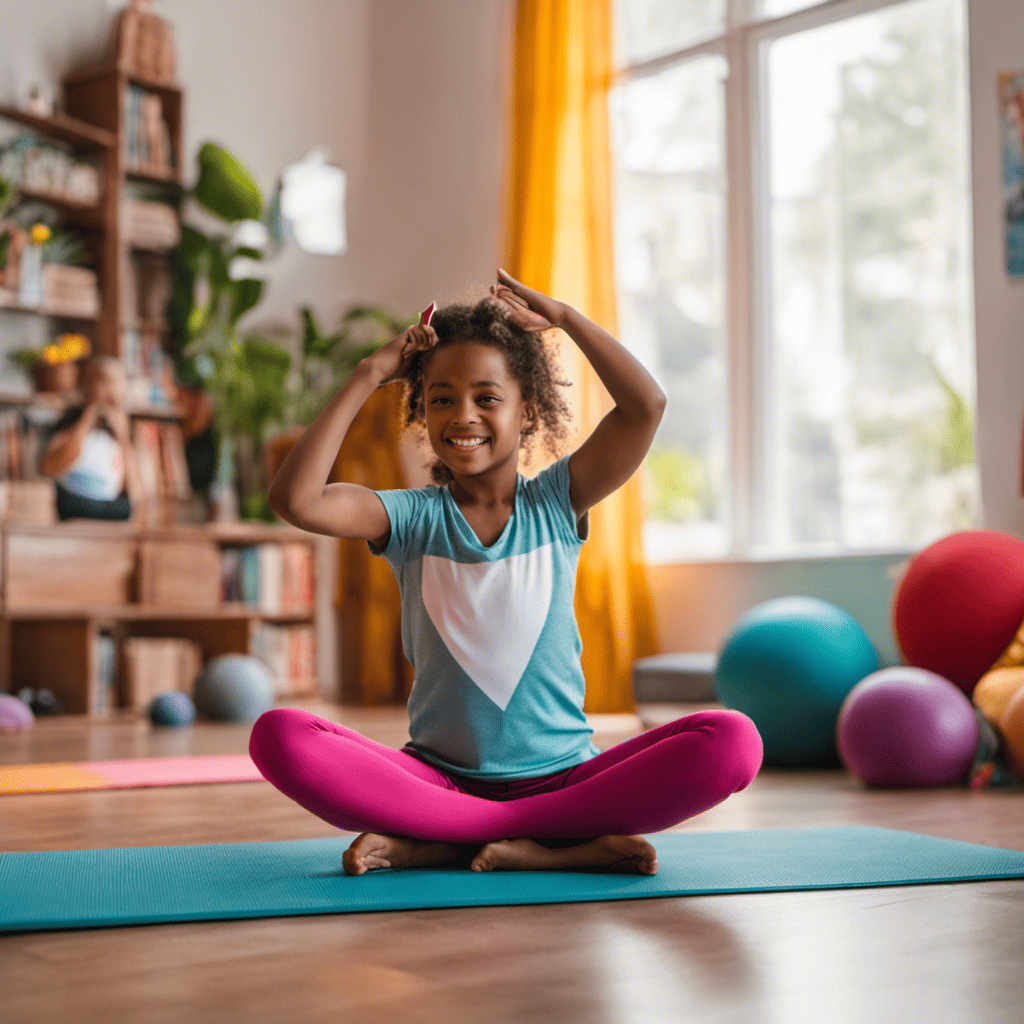Did you know that 80% of weight loss attempts result in failure, and 95% of dieters regain their weight? Learn what the Gap Between Health and Fitness is.
Being healthy doesn’t necessarily mean you are fit; being fit doesn’t mean you are healthy. Health is the state of complete physical, mental, and social well-being and not merely the absence of disease or infirmity. Fitness is one component of health that includes cardiorespiratory endurance (aerobic fitness), skeletal muscle strength (muscular fitness), flexibility, and body composition.
“Health” and “fitness” are two words that are often used interchangeably. But they’re not quite the same thing. “Health” is a general term that refers to your overall well-being, while fitness focuses on your physical capabilities. While they’re related, it’s important to understand the difference between them and how they affect one another to have a complete picture of your personal health.
The Gap Between Health and Fitness
There is a growing gap between the health and fitness of our population, and it is costing us dearly. We are living longer, but our physical health is not keeping up. Our obesity rates are continuing to increase, and our rates of heart disease, stroke, and cancer are all on the rise.
There are many factors that contribute to this gap, but one of the most important is the gap between health and fitness. Too often, we become complacent with our health and fitness, and we don’t take the necessary steps to close the gap. This article will provide you with tips and advice on how to bridge the gap between health and fitness.
What is the Gap Between Health And Fitness?

The gap between health and fitness may be defined as the difference between the physical condition of a person and their overall well-being. Most of the time, “health” means “physical health,” while “fitness” means “physical activity” or “exercise.” While physical health can be good, it does not necessarily indicate that a person is in good shape from an overall wellness perspective.
Fitness means working out or exercising regularly, which can help you feel better mentally, emotionally, and spiritually. Achieving better overall health requires more than just exercising; it requires lifestyle changes such as eating healthy foods, getting enough rest, reducing stress levels and engaging in social activities.
Furthermore, fitness should always be tailored to each individual’s needs and capabilities. To close the gap between health and fitness, people need to work on finding the best balance between the two parts of their lives. This will require taking into account all aspects of their life including nutrition, sleep habits, lifestyle choices and physical fitness goals. With dedication and consistency, people can make significant strides towards improving their overall wellbeing.
The gap between health and fitness is the distance between the level of health that we would ideally want and the level of health that we currently have.
Bridging the gap between healthcare and fitness?
Closing the gap between health and fitness requires a holistic approach. We must focus on both physical and mental wellbeing, as well as eating healthy, balanced meals and taking part in regular physical activity. In addition to this, it is important to make sure that we are getting enough sleep, managing our stress levels and staying hydrated. Education also plays an important role; understanding how our bodies work and what foods to eat for optimal health can help us close the gap. Finally, having access to adequate healthcare is essential in order to maintain good health. By combining these elements together, we can make sure that the gap between health and fitness is closed for good.
There are many ways to close the gap between health and fitness

1. Set Realistic Goals: Setting realistic and achievable goals is a great way to stay motivated and keep your focus on health and fitness. Make sure the goals are specific, measurable, attainable, relevant, and timely.
2. Find an Accountability Partner: Having someone to help you stay accountable can make a big difference in staying on track with your health and fitness goals. This could be a family member or friend who will check in with you to ensure that you are making progress towards your goals.
3. Get Active: Incorporating physical activity into your daily routine can help close the gap between health and fitness. Exercise helps boost energy levels, improve moods, build muscle strength, and increase endurance. Start with 30 minutes of exercise three times a week and gradually add more time until you’re exercising five times a week.
4. Eat Healthily: Eating healthy meals is essential for good health and fitness. Choose foods that are high in fiber, vitamins, minerals, antioxidants, lean proteins, and healthy fats like olive oil or avocado oil instead of processed foods or fast food options that are high in saturated fat and sodium. Eating more fruits and vegetables can also benefit overall health since they provide important nutrients like vitamin C and potassium, which can help reduce inflammation in the body and boost immunity levels naturally.
5. Get Enough Sleep: Proper sleep is key for maintaining optimal health and fitness levels since it gives our bodies time to rest and recuperate from everyday activities while also allowing us to concentrate better during the day when we are awake. Aim for seven to nine hours of quality sleep every night so that you wake up feeling refreshed each morning ready to tackle any task at hand!
What Are Some Tips for Closing The Gap Between Health And Fitness?
Health and fitness are two important aspects of life that should not be taken lightly. Closing the gap between them can be difficult, but it is possible with proper planning and commitment. One way to close the gap is to create a balanced plan that includes both exercise and healthy eating habits. Setting realistic goals can also help you stay motivated, so you can reach your health and fitness goals on time.
It is also recommended to track progress, so you can see how far you have come in closing the gap between health and fitness. Last but not least, it’s important to create a healthy living environment by getting rid of any bad influences or unhealthy habits in your daily life. Following these tips can help close the gap between your health and fitness goals and result in a healthier lifestyle overall.
Here are some tips for closing the gap between health and fitness:

Make sure that you are getting enough exercise.
Exercise is an important part of leading a healthy lifestyle. It helps build strength and endurance, lose weight, reduce stress and anxiety, improve sleep, and so much more. To make sure you’re getting enough exercise, it’s important to set realistic goals for yourself and plan out how you will reach them. Start by setting aside a certain amount of time each day for physical activity. This can be as simple as taking a walk or doing some light stretching. Once you’ve established a routine that works for you, try adding in more strenuous activities such as running or yoga to further challenge your body. Also make sure to get adequate rest and nutrition to fuel your body during exercise. With the right plan in place, you can ensure that you are getting enough exercise to stay fit and healthy!
Eat a balanced diet.

Eating a balanced diet is essential for maintaining good health and wellbeing. A balanced diet contains a variety of foods from all food groups, including carbohydrates, fats, proteins, vitamins, minerals and fibre. Eating a balanced diet can help to reduce the risk of chronic diseases such as obesity, heart disease and diabetes. It can also help to improve energy levels and mental wellbeing. Each meal should contain a mix of lean proteins, complex carbohydrates, healthy fats and plenty of fresh fruit and vegetables. Eating mostly whole foods is recommended over processed foods which often contain added sugars or unhealthy fats. It is also important to get enough fluids each day as water helps to keep your body hydrated and functioning optimally. Eating a balanced diet can be challenging but it is worth the effort as it will benefit your physical and mental health in the long run.
Keep a food journal to track what you eat and how it affects your health
Keeping a food journal is an excellent way to track what you eat and how it affects your health. It allows you to be mindful of the types of foods you are eating, and helps to identify any patterns or trends in your diet that could be affecting your health. A food journal can also help you to plan out healthier meal options and make dietary changes that will benefit your overall health. By tracking what you eat, when you eat it, and how it makes you feel afterwards, it can help to educate yourself on making better nutritional choices for a healthier lifestyle.
Avoid tobacco and alcohol.
Tobacco and alcohol are two of the most harmful substances that can be consumed. Not only do they cause serious health problems, but they can also have a negative impact on social relationships. They hurt the body in many ways, including giving people cancer and hurting organs like the heart and liver. In addition, their effects compound with time, so it is important to avoid them early on. Quitting tobacco and alcohol use is extremely difficult, but there are many programs available to help those who wish to do so. You will protect your health and improve your overall quality of life if you never use tobacco or drink alcohol.
Use supplements as needed to boost your fitness goal
When it comes to achieving your fitness goals, there is no one-size-fits-all solution. Everyone’s needs are different, and what works for one person might not work for another. So, it’s important to figure out what you need and use supplements to help you reach your fitness goal. Supplements can help your health in many ways, like giving you more energy, building more muscle, and making your mind clearer.
Depending on what you want to get out of your fitness plan, you may want to take multivitamins or other supplements with vitamins and minerals that your body needs. Additionally, protein supplements can help with muscle growth and recovery after workouts. Finally, some people may find that herbal supplements such as green tea extract or ginseng can help with weight loss or increase their overall energy levels. When using any type of supplement, make sure to read the label carefully and follow the recommended dosage for optimal results.
Make time each day for relaxation, meditation or yoga
Making time each day for relaxation, meditation or yoga is an important part of maintaining a healthy lifestyle. It can help reduce stress and anxiety, make it easier to concentrate, and make you feel better overall. Relaxation activities such as deep breathing can be done anywhere and only take a few minutes.
Meditation can be done sitting or lying down for at least 10 minutes and can involve focusing on the breath, repeating mantras or visualizing calming scenes. Yoga combines physical poses with breathing exercises that help to improve physical fitness while also calming the mind. All of these activities are excellent ways to schedule time each day for relaxation, meditation, or yoga in order to maintain your health and happiness.
Get treated for any medical conditions that you have.
It is important to get treated for any medical conditions that you have. It is important to understand how your condition affects you, and to find out what treatments are available and how effective they are. Depending on the severity of the condition, treatment may involve regular monitoring, medications, lifestyle changes or surgery.
It is also important to be aware of possible side-effects associated with any treatments so that you can make an informed decision about which option is best for you. Additionally, it’s important to be proactive in managing your health by making healthy lifestyle choices such as eating a balanced diet, exercising regularly and getting enough sleep. Ultimately, it’s up to you to take charge of your health and find the right balance between treatments and prevention.
Conclusion
By following these tips, you can bridge the gap between health and fitness and achieve your ideal level of health.
It is important to remember that being healthy does not necessarily mean you are fit, and being fit does not mean you are healthy. Both health and fitness are important parts of a person’s overall well-being, but they are two different things, and it’s important not to confuse them with each other.
As a veteran fitness technology innovator and the founder of GearUpToFit.com, Alex Papaioannou stands at the intersection of health science and artificial intelligence. With over a decade of specialized experience in digital wellness solutions, he’s transforming how people approach their fitness journey through data-driven methodologies.
